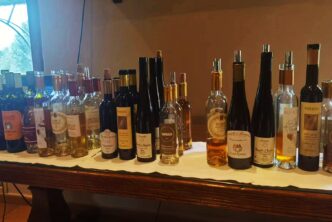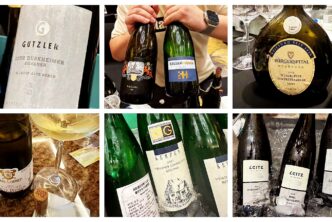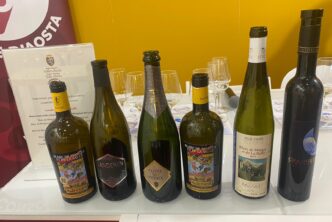Pelaverga Piccolo (also referred to at times as Pelaverga Comune), is an Italian native grape variety common to the territory of Verduno, a town that is one of only eleven communes the territories of which are allowed to produce Barolo. Pelaverga Piccolo is currently one of Italy’s hottest wine grapes; its wine, Verduno Pelaverga, is even hotter, as everyone wishes they had more of both.
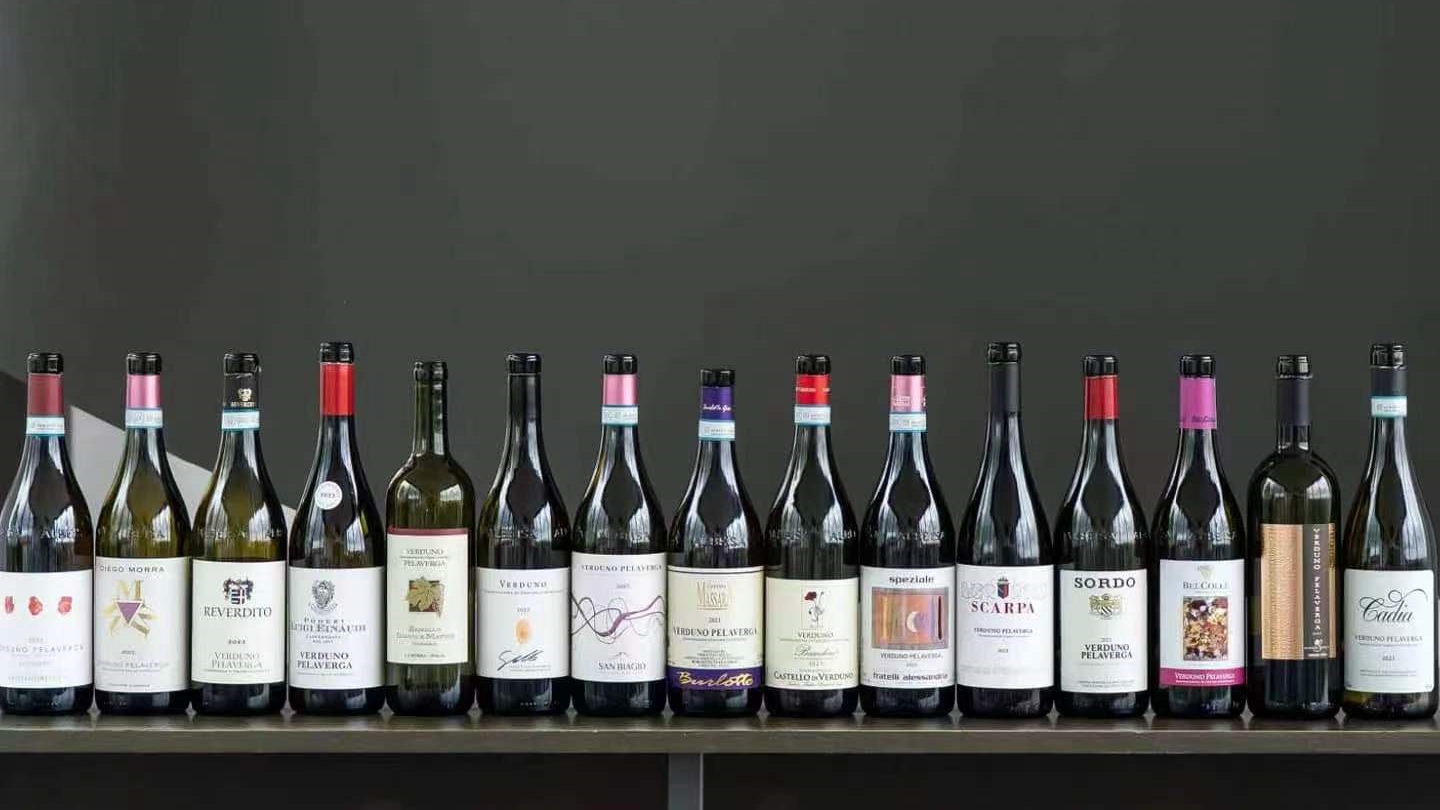
Just to be clear and ensure we are all on the same page of knowledge, Pelaverga Piccolo is unrelated to another similarly-named Piedmontese red grape, Pelaverga Grosso, that lives not in the Verduno area but rather that of Saluzzo (by car, it’s about two hours away eastwards of Verduno). As the adjectives grosso and piccolo imply, the two varieties are very different-looking: Pelaverga Grosso is so-called because it has the bigger bunches and especially the much bigger berries (it’s the latter trait that really distinguishes between the two varieties). Even more importantly, Pelaverga Grosso can give perfectly fine but aromatically neutral wines, while Pelaverga Piccolo belongs to the group of the “lightly aromatic” wine grape varieties. “Lightly aromatic” because although it is more aromatic than many other red grapes you know, Pelaverga Piccolo is still much less aromatic than for example Ruché, the many Moscato varieties and Gewurztraminer (its terpene concentration just isn’t high enough to reach levels of aromatic power that characterize the Muscats or Gewurztraminer, for example). Clearly, if Pelaverga Piccolo and Pelaverga Grosso are different grapes, it follows that their wines will also be different. So just like we all know that a wine made with Cabernet Sauvignon offers different aromas, flavours, and tannic power from one made with Cabernet Franc, the same applies to the wines made with the two distinct Pelaverga grapes. They are distinct grapes and hence give different wines. In fact, the wine names are different too: the one made with Pelaverga Grosso is called Cari, while the more famous wine made with Pelaverga Piccolo is called Verduno Pelaverga, the subject of my report.
Pelaverga Piccolo tends to drop acidity quickly, packs in sugar easily (so alcohol levels in the wines can soar) and tends to be a reductive variety; therefore, neither in vineyard nor cellar does it translate to being the easiest grape to work with. A 100% Pelaverga Piccolo wine is characterized by a pale to medium red colour (dark ruby, purple and almost black wines are an impossibility with this grape, unless varieties such as Barbera are added in, legal up to 15% of the finished wine). The wine exudes aromas of red fruit, sweet spices, pungent flowers and especially, of black and/or white pepper, given the wine’s very high rotundone concentrations. As its aromatic expression is one of Pelaverga Piccolo’s strong suits, oak is generally eschewed in its vinification techniques and aging regimens. For the same reason, a Pelaverga Piccolo wine that is not expressing an aromatic profile is either the product of a hot year (such as was the case with many wines of 2022) or is, simply put, a very poorly made wine (what would you think of a Gewurztraminer wine that had no aromatic expression? Exactly). Flavours are mostly of red fruit and spices, with saline elements related to the sedimentary marine origin of most of Verduno’s soils. The mouthfeel is generally a light-bodied one: Pelaverga Piccolo’s wines are red wines that want to be white wines, as a friend of mine once put very succinctly (and acutely). Another mentions that the wines are not unlike red Burgundies, but cost a fraction of the price. If such praise has piqued your interest and you wish to know more, then for a much more detailed, in-depth look at Pelaverga Piccolo, the grape, and Verduno Pelaverga, its wine, I refer you to my previous articles published here at the TerroirSense Wine Review: Pelaverga Piccolo and Its Unique, and Uniquely Good, Verduno Pelaverga Wine (published on September 29, 2023); and also The Pelaverga Piccolo Variety, Its Terroir, and The Amazing Verduno Perlaverga Wine (published January 26, 2021).
Last but least, as is the case with an any Italian native grape variety I write about, given that that I have been following and writing about Italian native grapes like nobody else for twenty-five years or so, these articles contain the most accurate, most up-to-date, and most complete information on this grape variety and wine. To be crystal-clear, cite what your read elsewhere at your own risk and peril.
Where to find it
The Pelaverga Piccolo production area covers the territory of Verduno and parts of the territories of communes of Roddi and La Morra: of those roughly thirty hectares, slightly more than 25 are in Verduno, 3.96 hectares are in Roddi and 1.62 hectares in La Morra. Until recently, there were roughly 150-180,000 bottles/year of Verduno Pelaverga wine produced, but since 2022 vintage production has soared over 200,000 bottles. Many estates saw noteworthy jumps in their yearly bottle production with the 2023 vintage, and I shall point out such changes in the tasting notes below. An analysis of such figures is useful because it tell us which producers are believing in the variety and are trying to increase their offer of it.
Recent vintages
The 2023 and 2022 vintages could not have been more different and the resulting Verduno Pelaverga are also extremely different. The hot and droughty 2022 vintage (only 130 millimeters of rain until October, with higher than usual maximum and average daily temperatures) gave slightly atypical Pelaverga Piccolo wines that were creamy and ripe, less marked in their aromatic personality, and generally ready to drink upon release (I have previously reviewed that vintage’s Verduno Pelavergas in the TerroirSense Wine Review, see: Pelaverga Piccolo and Its Unique, and Uniquely Good, Verduno Pelaverga Wine (published on September 29, 2023). Somewhat surprisingly, the 2022 wines turned out mostly very good to excellent, most likely because a good chunk of Verduno’s territory has a relatively high proportion of water-retentive soils.
The 2023 vintage was also not at all an easy year, and will actually go down in history as one of the all-time Italian vintages most marked (wrecked, in many cases) by the onslaught of downy mildew (peronospora). The year began following a much colder winter than the one that preceded 2022, with rain and cold lasting until the end of February (if anything, the rain was helpful in replenishing the depleted soil water reserves from the parched 2022 season). But while March and April were relatively dry, May and June were both wet and cool, bringing disease pressure; then on July 6 hail hit some parts of the Langhe hard, and though the Barolo denomination was mostly spared, it did not make for an easy time in the vineyards. Following these less than auspicious beginnings, the summer puttered along fairly uneventfully, with stable, hot days. In fact, as July and August were marked by some very hot days, some estates pulled the trigger on harvesting their Pelaverga Piccolo even sooner than in 2022, which is not what one might have expected to happen. A helpful spell of gentle rain that fell in the last ten days of August further helped the harvest run smoothly and relatively concern-free. Overall, the 2023 growing season parameters fell within normal ranges. The generally slightly cooler 2023 growing season weather made for wines characterized by crisp red fruit, white and pink flowers, and that are much more obviously peppery and spicy than those of 2022. And so, in contrast to 2022, the 2023 vintage gave wines that will not just benefit, but actually absolutely need, another six to twelve months in the cellar, marked as they are by tensile acidities that are almost Nebbiolo- and Grignolino-like. “Creamy” and “low-acid” are most definitely not the descriptors I’d use for these 2023 wines.
The wines and the producers
All the wines in this tasting report were tasted directly in Rome in late April 2024: most were also tasted in early April at the Vinitaly wine fair in Verona where I led a masterclass on these wines for the attending wine professionals. The wines in this report have already been discussed and described to about thirty wine professionals invited to the second edition of the Verduno è Uno association annual presentation of the new vintage (think of it as a Verduno Pelaverga Primeurs that I totally recommend wine professionals try and get themselves invited to, as it’s an outstanding two days of fun, learning, friendships, great food and wine). The wines of GB Burlotto, I Bré and Ascheri were not ready at the time of this tasting and were not included in this session, as they will be released come fall. Unlike last year’s edition when I presented the grape variety and wine, and then led the tasting directly in Verduno, this year I did so by video connection from Shanghai, with the excellent Sandro Minnella, a local wine educator, in the room guiding things from the field, so to speak.
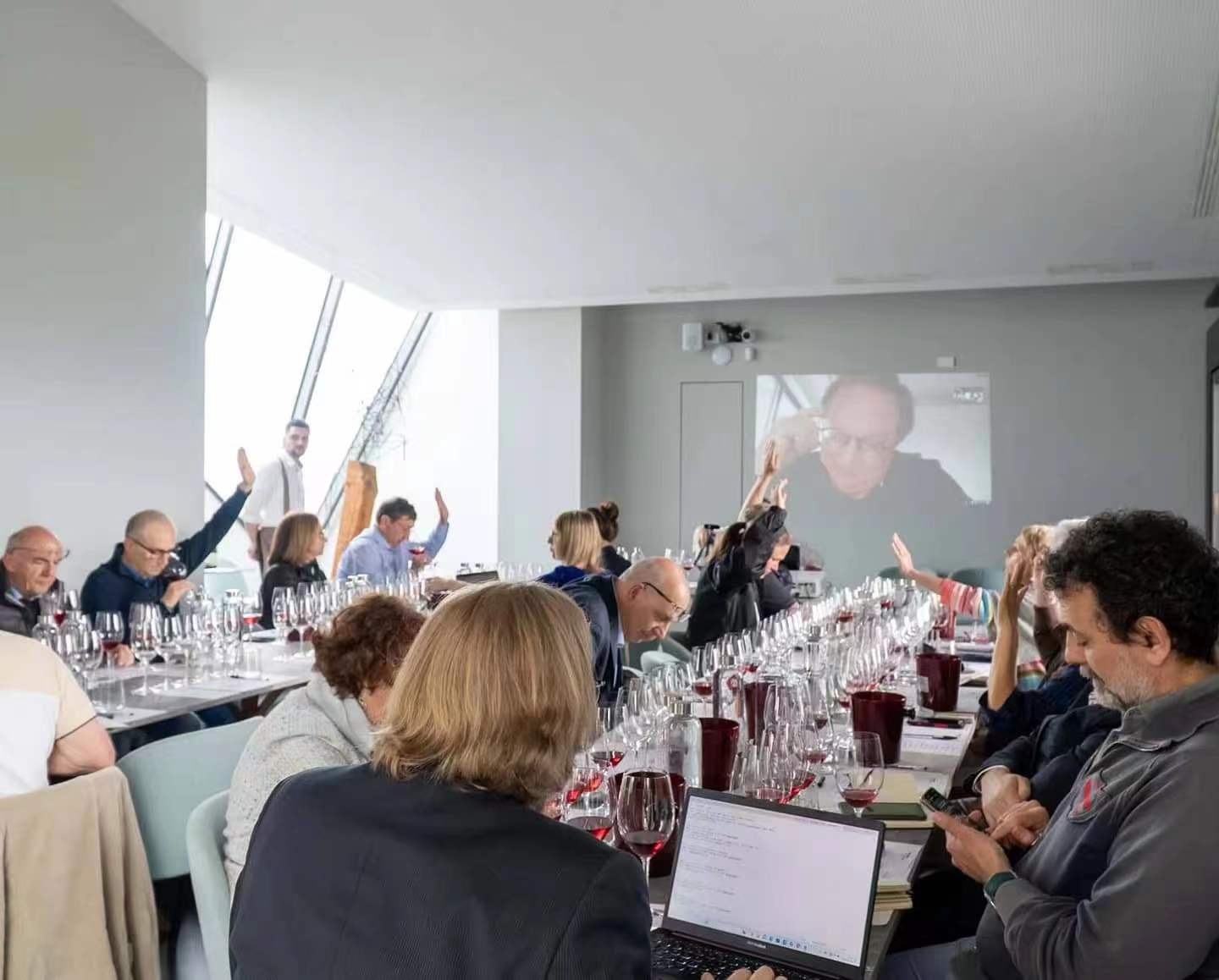
Arnaldo Rivera.
Arnaldo Rivera 2023 Verduno Pelaverga Sui Cristalli 92
Bright red. The clean nose offers sweet spices, bright red cherry and a gentle minerality. Fresh and vibrant in the mouth, with harmonious acidity nicely raming the red berry and sour red cherry flavours buffered by a candied violet note. The aftertaste is long and focused. The 25 years old vines are planted in two different plots: 0.66 hectares planted in 1991 and in 2004, facing west at 310 meters above sea level; and another 0.4 hectares planted in 1992 and 2005 facing east at 300 meters. The soils are mostly of the reddish-brown type richer in loam that give bigger-bodied, less perfumed Verduno wines, thereby explaining this wine’s nose. The wine’s name means “on the crystals” and it refers to the quartz-like inclusions in the soil. Stainless steel-fermented and aged, there’s about 8,000 bottles/year made. Importantly, just as it is with other Verduno Pelaverga wines in 2023, this one by Arnaldo Rivera is markedly less high in alcohol than their 2022, clocking in at 13% instead of last year’s 14%. Drinking window: 2023-2031.
Bel Colle.
Bel Colle 2023 Verduno Pelaverga 91
Light red. Strongly herbal, even grassy nuances on the nose and in the mouth complement concentrated sour red berries and cherries providing much freshness. A hint of white pepper emerges on the not exceptionally long but savoury back end. This wine is made in a very different way than most other Verduno Pelavergas, given the very long time it spends on the lees, which partly explains the wine’s grassy, herbal but not yeasty nuances, so I wonder if these grapes were picked at full physiologic ripeness. Encouragingly, because it shows the winery believes in this wine and sells it, production of Verduno Pelaverga at Bel Colle doubled in 2023, reaching 30,000 bottles (one of the largest productions of Verduno Pelaverga, if not the largest) compared to the 15,000 bottles of 2022. Good news, given that the 2023 is the better of the two wines. Bel Colle was bought by Bosio in 2015, but it first made a Verduno Pelaverga wine way back in 1982; in fact, the winery has always believed in the grape going as far as uprooting Chardonnay and Dolcetto about six years ago in favour of more Pelaverga Piccolo. Today, Bel Colle owns about two hectares planted in 1990 facing southwest at 400 meters above sea level. The wine is all stainless steel-fermented and aged. Drinking window: 2025-2029.
Cadia.
Cadia 2023 Verduno Pelaverga 93
Medium bright red; as usual with Cadia, this is a fairly light-colured but very pretty red Pelaverga Piccolo wine. Chamomile, anise and white pepper dominate candied violet and sultry red cherry aromas and flavours. Vibrant and saline, this finishes long and lifted, with botanical herb and licorice accents adding interest on the back end. Cadia is run by Bruno Giachino who was previously worked at the Monfaletto estate for fourteen years, then left in 1996 to make his own wines out of the commune of Roddi. His first vintage of Verduno Pelaverga was the 1998. The winery owns two vineyards of Pelaverga Piccolo, one roughly 15 years old and another planted in 1985 that is about 50 years old now (0.45 hectares facing east located at 280 meters above sea level). The final wine is almost always a blend of roughly 60-40% grapes from the two vineyards. The wine is all stainless steel-fermented and aged: no behemoth, but I often find Cadia’s Verduno Pelaverga boasts one of the most vibrant, penetrating, sultry perfumes of all. Drinking window: 2023-2029.
Castello di Verduno.
Castello di Verduno 2023 Verduno Pelaverga 94
Lively red. Beautiful red berry and red cherry nuances on the nose and in the mouth boast noteworthy focus and are complicated by saline and floral elements. A juicy peachy nuance emerges with aeration on the long, rising, tannic but noble back end that is also fairly saline. The estate owns two vineyards of Pelaverga Piccolo and rents another two hectares: the owned vineyards are in the cru Massara (about 0.7 hectares planted in 1972, 1988 and 2001 facing southeast at 240 meters above sea level on mostly clay-calcareous soil) and in the cru Boscatto (about 0.42 hectares planted in 1989 facing southeast at 340 meters above sea level on mostly calcareous-clay soil). The winery makes about 26,400 bottles made, all stainless steel-fermented and aged. This wine was renamed “Basadone” in 2000: in Piedmontese dialect, it means poppy (as in the flower, a common site in Barolo’s vineyards), but it also means “baciadonne” (or “he who kisses women, an apt descriptor for such a sultry, sexy, spicy wine). Drinking window: 2025-2032.
Diego Morra.
Diego Morra 2023 Verduno Pelaverga 95
Good bright red. Perfumed, vibrant aromas of red and dark berries and spicy, herbs, lifted by a black pepper nuance and a bright violet topnote. In the mouth, this is much more lifted and vibrant than Morra’s 2022, with an elegant, penetrating but suave mouthfeel. Closes long and precise. These Pelaverga Piccolo vines were planted in 1995, 2008 and 2018 with northwest to southeast exposures, between 220-260 meters above sea level, Morra is one of the largest landowners of Pelaverga vines at 2.2 hectares. The winery makes about 15,000 bottles/year, all stainless steel fermented and aged. This 2023 wine is a very good example of the differences between the Verduno Pelaverga wines of this year and those of 2022; while Morra’s 2022 wine boasted more than 14% alcohol, the 2023 clocks in at 13.5%, and is none the worse for wear. Drinking window: 2025-2033.
Fratelli Alessandria.
Fratelli Alessandria 2023 Verduno Pelaverga Speziale 94
Luminous red. Very floral, penetrating aromas and flavours of violet, rose, red cherry, redcurrant and raspberry, complemented by hints of cinnamon and white pepper. The winery keeps the fermentation temperature on the low side (below 25 degrees Celsius) so as to increase the aromatic pungency of the finished wine; the wine’s name “speziale” refers to spezie, the Italian word for “spices”, an apt name given the aromatic nature of Pelaverga Piccolo and its wine (it’s also the name of the Alessandria family’s pretty country resort I heartily endorse you stay in during your next vacation to Barolo-land). The family farms roughly 3.3 hectares of vines planted to Pelaverga Piccolo clones CVT C1, CVT 212 and CVT 223 beginning in 1971 and proceeding through 2021. The vines are located in the Verduno territory’s crus of Riva Rocca (facing south and east at 270-320 meters in altitude); Campasso (facing eastwards, planted at 250-350 meters of altitude); Boscatto (facing eastwards also at 250-350 meters above sea level); and Neirane (with a western exposure, planted at 330-400 meters in altitude). Other vines are planted in Sotto Orti (facing westwards at 270-310 meters in altitude), and Galleria (looking out to the west, at about 250-280 meters above sea level). The winery makes about 26,000 bottles/year of Verduno Pelaverga, all stainless steel fermented and aged. Drinking window: 2025-2032.
Gian Carlo Burlotto-Cantina Massara.
Gian Carlo Burlotto-Cantina Massara 2023 Verduno Pelaverga 92
Medium-deep red with an obvious garnet cast: much, much lighter in colour than the 2022. Nuances of mint and white pepper enliven the aromas of red cherry, red berries, a hint of dark plum and violet. Then dense and rich with fleshy red fruit flavours complicated by tangerine peel, camphor and dried apricot. The long aftertaste features smooth tannins, highish but harmonious acidity and a bright aromatic peppery note, plus good lift, heightened by the slightly lower alcohol volume in this wine compared to last year’s version (13.5% versus 14%). About 1.1 hectares of Pelaverga Piccolo were planted in 1980 facing southeast at 290 meters above sea level. The winery makes about 14,500 bottles/year, all stainless steel fermented and aged. Drinking window: 2025-2030.
Gian Luca Colombo-Segni di Langa.
Gian Luca Colombo-Segni di Langa 2023 Verduno Pelaverga 91+
Good full ruby-red. Aromas of red cherry, red roses, violets, and orange peel are very Nebbiolo-like. Then Nebbiolo-like in the mouth too, with noteworthy tannic heft supporting the very pure red fruit and sweet spice flavours. The long finish is clean and nicely energetic, but still youthfully closed. This needs to spend some time in a good cellar. Colombo is one of Piedmont’s emerging talents and his 2022 and 2023 Verduno Pelaverga wines provide an interesting study in contrasts: I actually liked his 2022 Verduno Pelaverga more, finding this one slightly clenched and very reminiscent of Nebbiolo (in terms of colour, aromas and flavours) more so than Pelaverga Piccolo. Still, it’s hard to argue with the wine’s quality, which as always is the case with Colombos’s wines, is pretty stellar. I’m sure this wine will warrant a higher score in a few year’s time. Colombo planted two Pelaverga Piccolo vineyards in 2017, and subsequently other small parcels of it with the Castello di Verduno Pelaverga Piccolo biotype (most likely, that’s the “original” Pelaverga Piccolo biotype native to the area). His vines face south/southeast and are planted at 240-250 meters above sea level. He made about 3000 bottles of the 2023 vintage (up from the 2,200-2,700 of the 2022), all aged in amphora, a rarity for the area. Drinking window: 2027-2035.
Luigi Einaudi.
Luigi Einaudi 2023 Verduno Pelaverga 93
Honestly, there may be no more improved wine from Verduno in 2023 than this one. Last year’s Verduno Pelaverga was the first one this venerable house famous for its Dolcetto di Dogliani and Dogliani wines (Einaudi is arguably Italy’s best, or at no worse second best, producer of Dogliani wines) and Barolo, and growing pains, compounded by the hot, difficult year were obvious. The wine was excellent, but it didn’t speak as much of Pelaverga Piccolo or Verduno as I or anybody else might have expected. No such problem with this lovely 2023, that hits the ground running; the estate must think so too given that they produced only 3000 bottles of Verduno Pelaverga in 2022 but as many as 5700 in 2023. The alcohol level is also lower than it was in 2022 (13.5 in 2023 versus 2022’s 14%).
Bright red-ruby in colour. Perfumed aromas and flavours of red berries, plums and white pepper, with hints of violet and rose petals. Juicy and lively in the mouth, with a pristine set of repeating peppery red berry nuances lingering nicely on the long rising and floral finish. Einaudi farms roughly 0.5 hectares of Pelaverga Piccolo vines planted in 2000, facing west at 300 meters above sea level. The wine is aged in concrete fiberglass and stainless steel. Drinking window: 2025-2033.
Michele Reverdito.
Michele Reverdito 2023 Verduno Pelaverga 93
Dark red. Precise aromas and flavours of minty red berries, dark cherry, sweet spices, camphor and white more than black pepper. Then full and serious in the mouth, but with a good acid spine nicely framing the lively red cherry and berry nuances that repeat on the minerally, long back end. Reverdito farms 0.65 hectares of Pelaverga Piccolo planted in 2008 facing southwest at 290 meters above sea level, stainless steel-ferments and ages. This pretty 2023 clocks in at just a smidge over 13% (13.2%, actually), a good degree less than last year’s 2022 wine that was 14%. Furthermore, this is yet another estate where production of Verduno Pelaverga has increased markedly from one year to the next: while there were only 2890 bottles made of the 2022, there are 4665 of this beauty in the 2023 vintage. Reverdito is best-known for his outstanding Barolos, but I’d say he’s got a pretty good hand with Pelaverga Piccolo too, not just with Nebbiolo. Bottoms up! Drinking window: 2024-2033.
Poderi Roset 2023 Verduno Pelaverga 92
Deep red-ruby. Ripe red cherry, white pepper, vanilla and tobacco on the nose. Fleshy red cherry and blackberry flavours are supple but concentrated, nicely extended on the smooth finish by harmonious acidity. This is always one of the bigger, darker-coloured Verduno Pelaverga wines I know of. About 0.51 hectares were planted in 1996 and 2021 facing southeast at 350-450 meters above sea level on poor loamy-clay soils that lower crop yield and helps concentrate the final wine. The winery makes about 4000 bottles/year. Drinking window: 2024-2030.
San Biagio 2023 Verduno Pelaverga 92
At San Biagio they farm roughly one hectares of Pelaverga Piccolo (planted in 1990 and in 2018) facing east at 390 meters above sea level; the winery increased its Verduno Pelaverga production in 2023, getting up to 9,000 bottles/year (up from the 8,200 bottles/year of 2022). The wine continues to be all stainless steel-fermented and aged. As you have probably understood by my earlier reference to the Capalot vineyard of La Morra, this is one Verduno Pelaverga-producing winery not situated in Verduno but that can do so thanks to an historical exemption to produce it in La Morra instead.
Bright red colour with a strong garnet edge; up until last year, I really believed that San Biagio usually makes one of the darkest Verduno Pelaverga wines of all (La Morra’s Capalot cru certainly seems capable of making very dark wines by Barolo’s normal lighter-coloured standards), but that was not the case in 2022 and neither it is in 2023, so go figure. Delivers straightforward but layered aromas and flavours of red cherry, grapefruit, violet and white pepper, with an extremely savoury presence on the long smooth finish. This clocks in at the same octanes as the 2022 (13.5%) but strikes me as being the much more concentrated, deep wine. This is at once one of the more floral Verduno Pelavergas you’ll ever taste, and also one made by perhaps the longest skin-contact period (forty days) used by anyone. It is a wine that is also very noteworthy in that it is a Verduno Pelaverga made with grapes that grow in one of the Barolo denomination’s best-known crus, the Capalot of La Morra (made famous by the likes of Roberto Voerzio and Silvio Alessandria). Drinking window: 2025-2030.
Scarpa 2023 Verduno Pelaverga 92
Bright red with ruby highlights. Aromas of blueberry, medicinal herbs and soy sauce are further complemented by strawberry nectar, mint and white pepper. Fresh, clean and linear in the mouth, with a long vibrant close that hints of aromatic herbs and camphor. Along with Einaudi’s 2023 Verduno Pelaverga, this is the most improved wine I tasted this year, as the 2023 Scarpa Verduno Pelaverga shows a much more pristine, aromatic note that showcases Pelaverga Piccolo’s charms, something that was much harder to do in the hot and dry 2022 vintage. Scarpa farms bout 1.1 hectares of Pelaverga Piccolo planted in 2019 by over-grafting pre-existing vines planted in 1970, facing east at 350 meters above sea level. The wine is stainless steel-fermented and aged. This is another winery that has an historical exemption to make Verduno Pelaverga wine despite it being located in the province of Alessandria. It appears they made a little less Verduno Pelaverga in 2023 (9,000 bottles) than they did in 2022 (13,000 bottles) and maybe that lower production volume has something to do with the obvious improvement in the wine. Well done. Drinking window: 2025-2032.
Sordo 2023 Verduno Pelaverga 91
Good full red-ruby. Very fresh aromas and flavours of red and dark berries, with complicating notes of violet, tobacco and rose emerging with aeration. Closes with excellent length and freshness on the rising finish. A wine that is very typical of the Sordo winemaking style, with more upfront fleshy fruit, less of the peppery-aromatic quality found in other wines made with the Pelaverga Piccolo variety and a softer mouthfeel with tannins that are nicely suave. This is a well-balanced, harmonious Verduno Pelaverga that will find many fans. Sordo farms his Pelaverga Piccolo vines at 220 meters above sea level; they were planted back in the 1990s, facing southwest. About 6,000 bottles made and only 13.5% alcohol. Drinking window: 2025-2031.
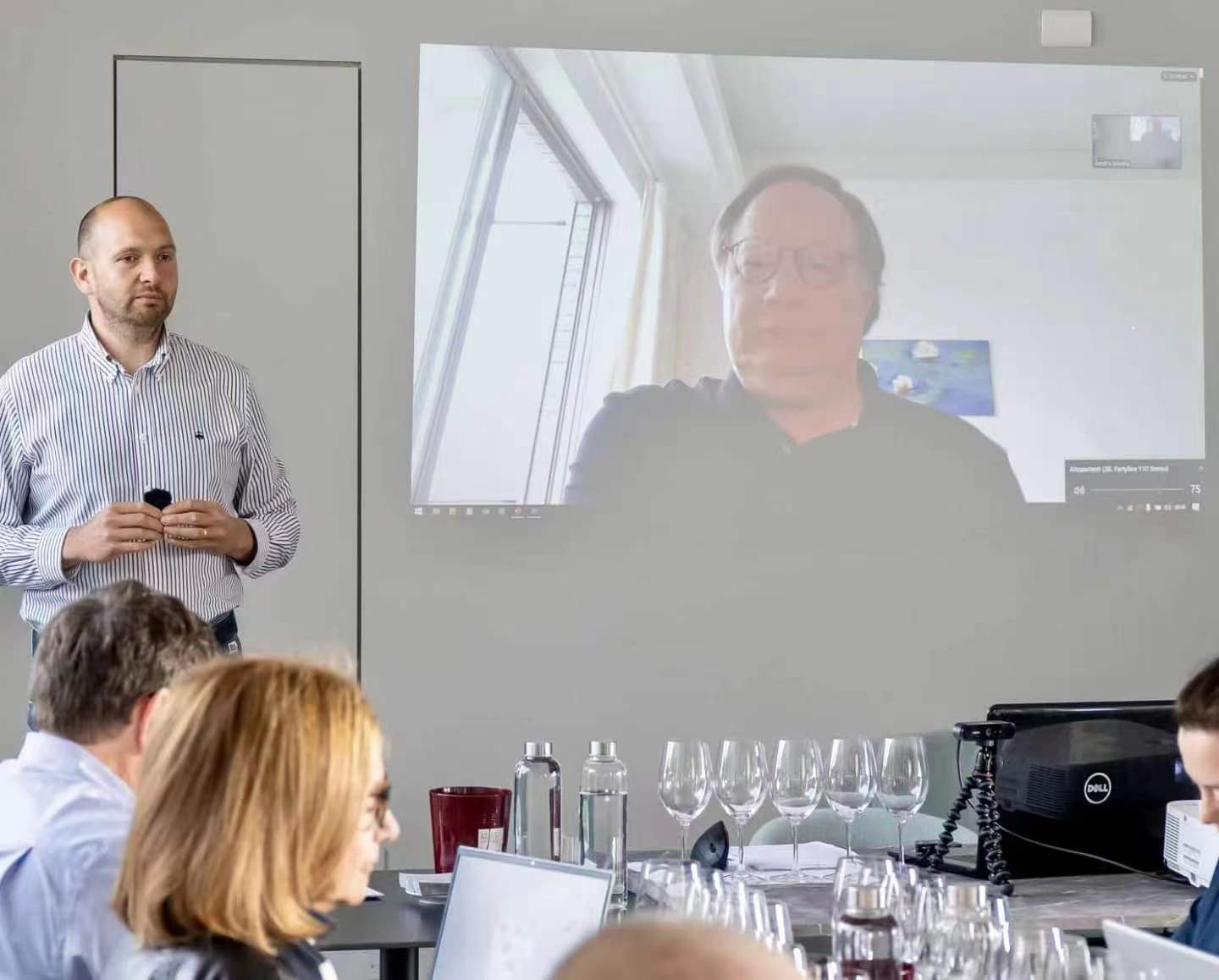

 中文
中文

